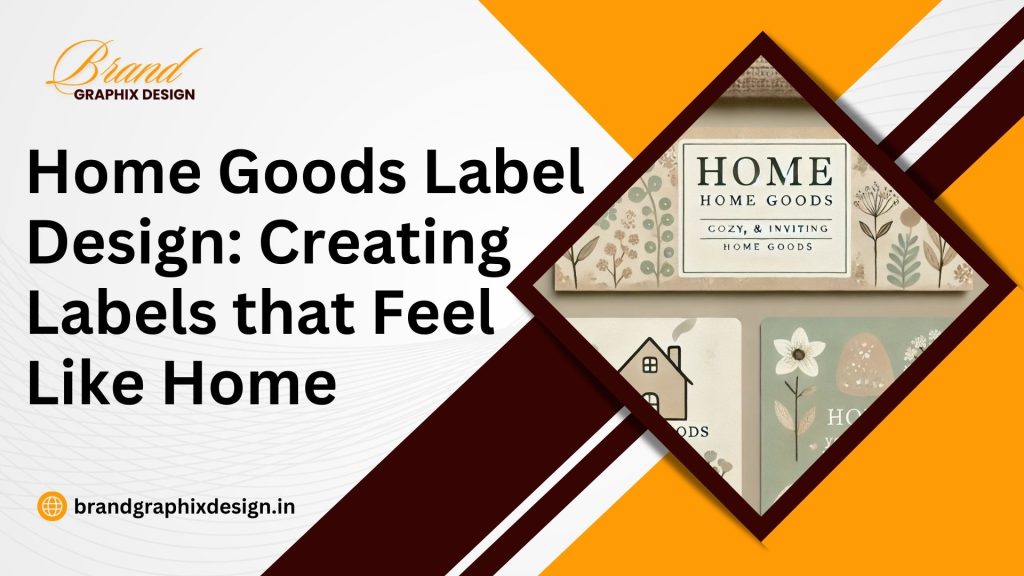Introduction: The Role of Labels in Home Goods
When you think about home goods, whether it’s a cozy candle, a cleaning product, or kitchen essentials, the label plays a crucial role in how we perceive and choose these products. A well-designed label doesn’t just provide information; it creates a connection, a sense of comfort, and aligns with the aesthetic of our homes. In this blog, we will explore how to create labels that feel like home, providing essential tips and tricks that can help your home goods stand out on the shelf and in the hearts of your customers.
1. Understanding the Target Audience
The foundation of any successful label design is understanding who you are designing for. Home goods are typically purchased by consumers who value comfort, quality, and style. Understanding these preferences will guide your design choices and help you create labels that resonate with your audience.
- Identify Key Demographics: Consider who your primary buyers are. Are they young professionals, families, or retirees? Each group may respond to different design elements.
- Focus on Emotional Appeal: Home goods labels should evoke warmth, reliability, and a sense of belonging. Use design elements that mirror these emotions.
- Incorporate Cultural Elements: In India, traditional designs and colors often resonate deeply. Incorporate elements that reflect cultural aesthetics and values.
By tailoring your label design to the specific tastes and values of your target audience, you can create a stronger connection and increase the appeal of your products.
2. Choosing the Right Colors
Color is a powerful tool in label design, especially for home goods. The right colors can evoke emotions, create a sense of calm, and make your product stand out. For home goods, it’s essential to choose colors that are inviting, relaxing, and consistent with the idea of a cozy home.
- Neutral Tones: Colors like beige, soft greys, and whites are popular in home goods because they convey simplicity and elegance, fitting well with most home decors.
- Earthy Hues: Earth tones such as brown, green, and terracotta can give your label a natural, organic feel, perfect for products marketed as eco-friendly or handmade.
- Warm Colors: Warm colors like soft yellows, oranges, and warm reds can create a welcoming atmosphere, making your product feel more inviting.
Choosing a color palette that aligns with your brand and product can make a significant impact on how your product is perceived and can help create a label that feels like it belongs in any home.
3. The Power of Typography
Typography is more than just choosing a font; it’s about how your words appear on the label. For home goods, typography should be easy to read, aesthetically pleasing, and consistent with the mood of the product. The right typography can make your label feel more personal and homely.
- Legibility is Key: Use simple, clean fonts that are easy to read at a glance. Avoid overly decorative fonts that can be hard to decipher.
- Handwritten Fonts: Handwritten or script fonts can add a personal touch, making the label feel more intimate and homey, but use them sparingly to avoid clutter.
- Consistent Typography: Ensure that the fonts used on all labels are consistent, reflecting your brand’s identity and creating a cohesive look across your product range.
Good typography not only makes your label more readable but also enhances the overall feel of your product, making it more appealing to consumers looking for that perfect addition to their home.
4. Incorporating Imagery and Graphics
Imagery and graphics can significantly enhance the appeal of a home goods label. They help tell your brand’s story and give visual cues about the product’s purpose and quality. For home goods, the imagery should evoke a sense of comfort and reliability.
- Use Relatable Imagery: Images that evoke feelings of home, such as cozy interiors, natural elements, or everyday household items, can create a stronger connection with customers.
- Simple Icons: Incorporate simple icons to convey product features quickly, such as a leaf for organic ingredients or a house for home care products.
- Subtle Textures and Patterns: Adding textures or patterns can give your label a tactile quality, enhancing the overall sensory experience of the product.
Using the right imagery and graphics can make your label more engaging and help convey the comfort and quality that customers seek in home goods.
5. Highlighting Key Product Benefits
For home goods, the benefits of the product are often what convince a customer to make a purchase. Highlighting these benefits clearly on your label can help customers quickly understand what makes your product special and why it’s the right choice for their home.
- Use Bullet Points: List the product’s key benefits in bullet points for easy readability. This could include features like “natural ingredients,” “long-lasting,” or “eco-friendly packaging.”
- Emphasize Unique Features: If your product has a unique selling point, such as being hypoallergenic or made from sustainable materials, make sure this is prominently displayed.
- Certifications and Endorsements: Include any certifications, such as “Organic,” “Cruelty-Free,” or “BPA-Free,” to build trust and credibility.
By clearly communicating the benefits of your product on the label, you can influence purchasing decisions and provide customers with the information they need to choose your product with confidence.
6. Creating a Cohesive Brand Identity
Consistency in branding is essential, especially in the home goods market where trust and familiarity play a big role in consumer decisions. Your label should be a natural extension of your brand, reflecting its identity and values consistently across all your products.
- Consistent Use of Colors: Stick to your brand’s color palette to create a cohesive look across all your products. This helps customers easily identify your brand on the shelves.
- Logo Placement: Place your logo consistently on all labels, whether it’s at the top, bottom, or center. This helps reinforce brand recognition.
- Align Messaging: Ensure that the tone and language used on the label align with your brand’s overall messaging, whether it’s casual and friendly or formal and elegant.
A cohesive brand identity on your labels helps build brand recognition, making your products more familiar and trusted by customers.
7. Practical Considerations in Label Design
While aesthetics are important, practicality is crucial in label design for home goods. Your labels need to be functional, durable, and easy to use to ensure they serve their purpose effectively and enhance the customer experience.
- Durable Materials: Choose materials that can withstand the environment where the product will be used, such as moisture-resistant labels for bathroom products or heat-resistant labels for kitchen items.
- Easy Application: Ensure that the labels are easy to apply without bubbles or wrinkles, and if needed, easy to remove without leaving residue, especially for reusable containers.
- Appropriate Size and Shape: The label should fit the product perfectly without obstructing important information or making the product difficult to use. Custom shapes can add uniqueness but should still be practical.
Focusing on practical aspects of label design ensures that your product not only looks good but also meets the functional needs of your customers.
8. Embracing Minimalism
Minimalism is a popular trend in home goods label design. A minimalist approach can convey elegance, sophistication, and a sense of calm, all of which are desirable qualities in home products. By stripping away unnecessary elements, you can create a clean, modern look that appeals to today’s consumers.
- Focus on Essentials: Include only the most important information and design elements. This might mean simplifying the text, using fewer colors, or choosing a single, strong image to represent the product.
- Use White Space Effectively: White space helps to focus attention on the most important elements of your label. It can also make your product feel more luxurious and high-end.
- Subtle Elegance: Choose a simple, elegant font and color scheme to convey quality and sophistication without overwhelming the design.
Minimalism in label design can create a timeless, elegant look that resonates with consumers and enhances the overall appeal of your home goods.
9. Testing and Refining Your Label Design
Before finalizing your label design, it’s important to test it in real-world conditions to ensure it performs well and meets customer expectations. Testing can help you identify potential issues and make necessary adjustments before the product
hits the market.
- Conduct Focus Groups: Get feedback from potential customers on the design. Ask them about their first impressions, readability, and overall appeal of the label.
- Durability Testing: Test your labels under various conditions to ensure they hold up well in different environments, such as exposure to moisture, heat, or sunlight.
- Check Compliance: Ensure that your label meets all legal and regulatory requirements for your product category and market.
By testing and refining your label design, you can ensure that it not only looks good but also performs well, leading to higher customer satisfaction and better sales.
Create Labels That Feel Like Home
Creating a label that feels like home is about more than just aesthetics; it’s about understanding your customers and crafting a design that resonates with them on an emotional level. By focusing on the essentials of good label design—understanding your audience, choosing the right colors, using effective typography, incorporating meaningful imagery, and ensuring practicality—you can create labels that not only stand out but also create a connection with your customers. If you’re ready to take your label design to the next level, we’re here to help. Contact us today at +91 91189 11171 to start designing labels that truly feel like home.



